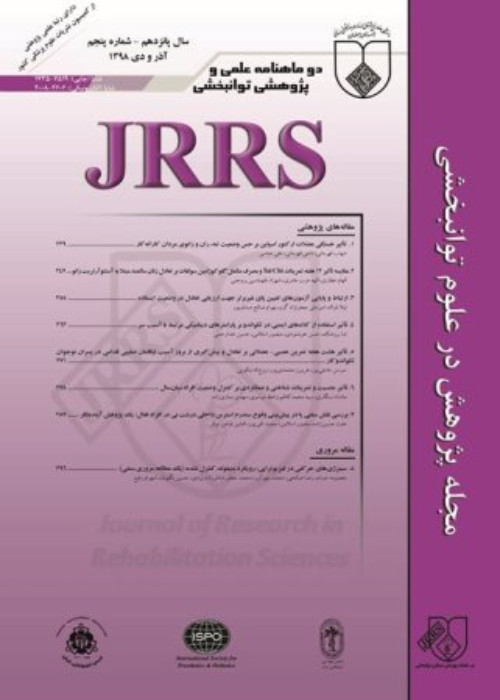The effects of balance, mental and concurrent training on balance in healthy older males
Author(s):
Abstract:
Introduction
Since balance maintenance is one of the indices of determining independence in older people, identifying factors that have some effects on it appears to be an interesting research issue. The aim of this study was to compare the effects of aquatic training; mental training and concurrent training (both aquatic and mental training) on balance in normal elderly males.Materials And Methods
One-hundred-and-twenty healthy older men (mean age 65.07 ± 14.14, mean weight 71.86 ± 3.31 Kg, mean height 173.2 ± 3.57 Cm) were selected and then randomly assigned to one of following 4 groups: 1) balance aquatic training (n=30), 2) mental training (n=30), 3) concurrent (both aquatic and mental training) (n=30) and a control group (n=30). To estimate subject's balance, Y-Test was performed in three directions. Subjects in group 1 completed a six-week aquatic balance training program which was held three times per week and lasted one hour for each session. Subjects in mental-training-time group had the same training program as did those in group 1 with one difference regarding to the duration of each training session which was 15 minutes per session. In group 3 (concurrent training), subjects enrolled in a training program that combined the trainings provided for groups 1 and 2. For statistical analysis of raw data, Descriptive Statistics, Paired-sample t test, ANOVA and Toki Post-Hoc test (p≤0/05) were applied.Results
Reaching distance was significantly different among experimental groups at the end of training programs. Moreover, Based on comparing the above-mentioned experimental groups according to the reaching distance, which represents the effects of training on balance more exactly, it was revealed that concurrent group was the only one in which the greatest distances on all three direction of Y-test had been obtained after training.Conclusion
The results of this study were in agreement with previous findings indicating a significant effect of exercise programs on improving the balance. Possible reasons for increasing balance due to training may include: increase in strength of subject's lower limbs after participating in exercise programs, more facility in neuromuscular conduction, increase in muscles synergy, pressure on neuromuscular systems and removal of disinheriting process. According to the results of this study, it is concluded that much more attention have to be given to aquatic and mental training in designing fitness programs for elderly people.Language:
Persian
Published:
Journal of Research in Rehabilitation Sciences, Volume:6 Issue: 2, 2011
Page:
159
magiran.com/p878273
دانلود و مطالعه متن این مقاله با یکی از روشهای زیر امکان پذیر است:
اشتراک شخصی
با عضویت و پرداخت آنلاین حق اشتراک یکساله به مبلغ 1,390,000ريال میتوانید 70 عنوان مطلب دانلود کنید!
اشتراک سازمانی
به کتابخانه دانشگاه یا محل کار خود پیشنهاد کنید تا اشتراک سازمانی این پایگاه را برای دسترسی نامحدود همه کاربران به متن مطالب تهیه نمایند!
توجه!
- حق عضویت دریافتی صرف حمایت از نشریات عضو و نگهداری، تکمیل و توسعه مگیران میشود.
- پرداخت حق اشتراک و دانلود مقالات اجازه بازنشر آن در سایر رسانههای چاپی و دیجیتال را به کاربر نمیدهد.
In order to view content subscription is required
Personal subscription
Subscribe magiran.com for 70 € euros via PayPal and download 70 articles during a year.
Organization subscription
Please contact us to subscribe your university or library for unlimited access!



